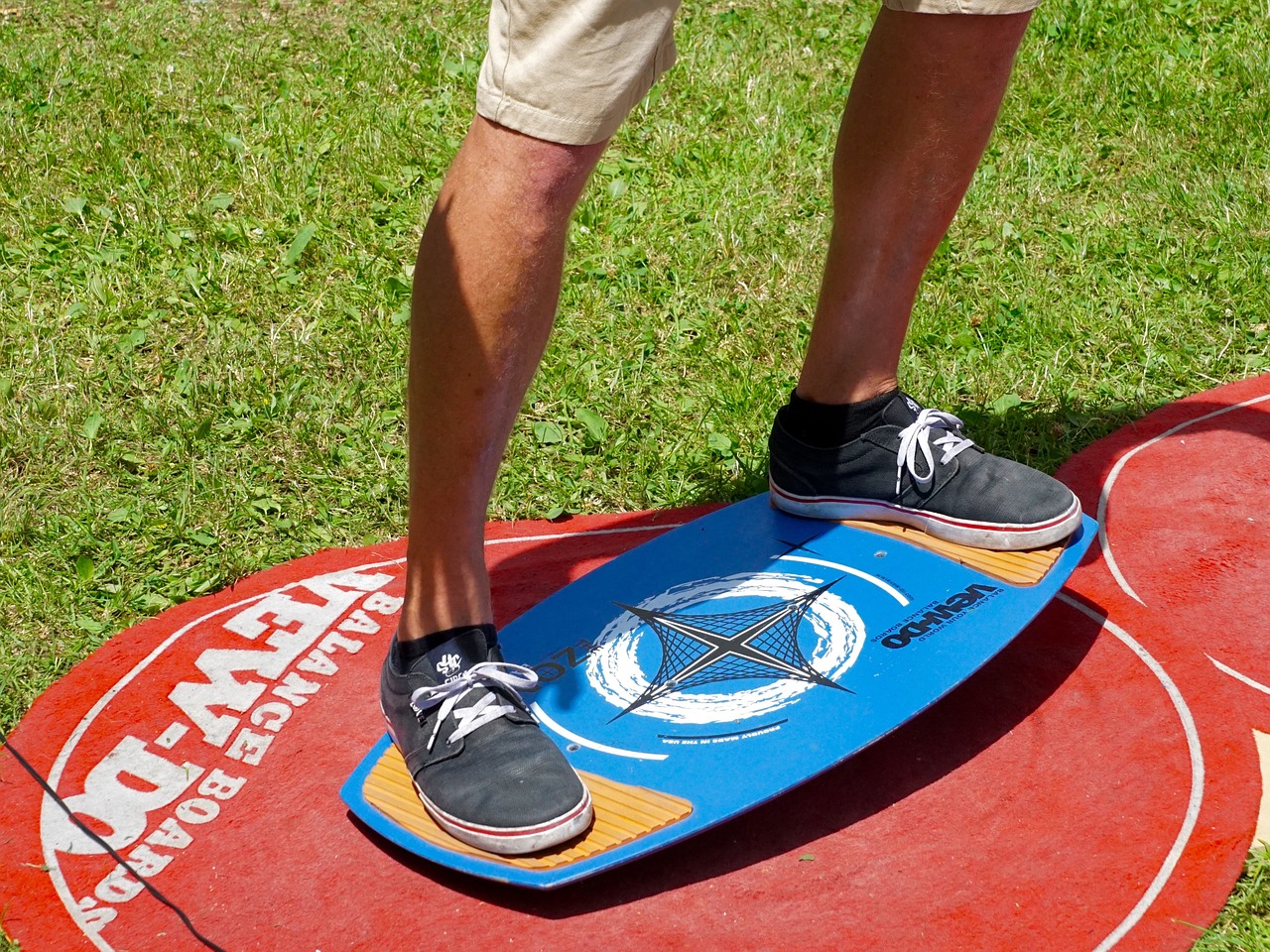
Original article published on Chron Live Healthy, Republished on Week&
October 23, 2013|Updated May 21, 2019 2:47 a.m.
by Cindy Killip
A wobble board is an exercise device used to improve balance, functional strength and mental focus. Wobble boards have a flat surface supported over a less stable cylinder, spring, or ball. Balancing on the flat surface challenges your muscles and proprioception as your body and mind adapt to moving on the unstable support below. Wobble boards are available in different sizes and shapes and can be modified for different ability levels. Other balance devices such as balance balls, cushions and rocker boards provide similar benefits.
Improve Proprioception and Balance
Proprioception is your ability to sense your environment and adjust the positions of your body accordingly. It is what allows you to hit a tennis ball, hold a weight or stand on one foot, for example. Proprioception must be developed in the same way strength and aerobic capacity are – by progressing to more difficult challenges only after you’ve developed the basic skill. Balance training should begin on the floor. Once that becomes easy, add challenges, progressing from static to dynamic exercises. The instability of a wobble board adds a dynamic component to your balance training, forcing greater neuromuscular activation to further develop your proprioception. The results are better balance and stability, the ability to change directions more quickly when needed and more finely-tuned motor skills.
Boost Functional Strength
Another important benefit of using a wobble board is improved functional strength. Functional exercise helps your muscles work better in everyday activities. No individual muscle functions alone, so exercise should include a variety of movement patterns for best results. Functional exercises done on a wobble board challenge multiple muscles and joints to stabilize and adjust themselves. Because your core muscles contract whenever you are in an awkward or unstable position, just standing on a wobble board will develop core strength and improve lower body strength. Holding a plank position with your hands on the board will develop core and upper body strength. Using the wobble board to do squats, lunges and pushups will increase the dynamic properties of these exercises for greater challenge.

Improve Mental Focus
To balance properly, you must learn how to keep your center of gravity aligned over your base of support. Challenging your balance forces the left and right halves of your brain to communicate more, thus improving sensory integration and coordination. If you then move an arm or leg across the mid-line of your body while on the wobble board, you further challenge this neuromuscular communication. By doing slow, controlled balance exercises on wobble boards, you will increase your self-awareness and instill a sense of calmness to improve your mental focus.
Be Safe to Prevent Injury
By developing proprioception, strength and focus, wobble board exercises help you react to sudden changes in your environment, thus reducing the risk of injury. Ankle sprains are common in many athletes. A review published in the International Journal of Risk and Safety In Medicine reports that wobble board training can help prevent repeat ankle sprains in athletes with a history of ankle sprains. Muscles on the bottom of your feet contract more readily with greater postural demand, as is required on a wobble board. Working these muscles is beneficial, because they are essential for optimal posture and movement function.
References
- IDEA Fitness Journal: How To Improve Proprioception
- The American Journal of Sports Medicine: The Effect of a Proprioceptive Balance Board Training Program for the Prevention of Ankle Sprains: A Prospective Controlled Trial
- Clinical Biomechanics: Recruitment of the Plantar Intrinsic Foot Muscles with Increasing Postural Demand
- Neuroscience Letters: Effects of Different Unstable Supports on EMG Activity and Balance
Cindy Killip is a medical exercise specialist, health coach, author and speaker who has been teaching and writing about exercise and wellness since 1989. She authored the book Living the BONES Lifestyle: A Practical Guide to Conquering the Fear of Osteoporosis [2012]. Killip holds multiple certifications through the American Council on Exercise and degrees in communications and sociology from Trinity University with a focus on pre-med and exercise science. She studied exercise physiology as a graduate student at the University of New Mexico.
Original article published on Chron Live Healthy at http://livehealthy.chron.com/wobble-board-benefits-5223.html Republished on Week& at https://www.weekand.com/healthy-living/article/wobble-board-benefits-18072489.php




